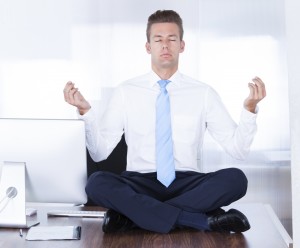Guided Meditation
Meditation is defined as an intentional self-regulation of attention. Simply put, guided meditation is meditation with the assistance of a guide. Guided meditation is usually experienced in a classroom setting, one-on-one with a meditation teacher, or with an audio or video recording that guides the meditation session. Some mental health counselors may also use guided meditation as a tool to help people in therapy.
is defined as an intentional self-regulation of attention. Simply put, guided meditation is meditation with the assistance of a guide. Guided meditation is usually experienced in a classroom setting, one-on-one with a meditation teacher, or with an audio or video recording that guides the meditation session. Some mental health counselors may also use guided meditation as a tool to help people in therapy.
What to Expect in a Guided Meditation Session
A guided meditation session may last anywhere from five minutes to an hour. In general, many guides recommend meditating for 15 minutes or more in order to achieve deep relaxation and experience the benefits of meditation.
During your guided meditation session, the instructor or recording may ask you to sit comfortably on the floor or lie down. You will be guided through relaxing visualizations designed to help your mind focus, reduce tension, and promote stress relief. Some recordings or instructors may also make use of music or sounds to help ease your transition into deep relaxation.
Mental and Physical Health Benefits of Guided Meditation
Guided meditation may be used for several therapeutic purposes. Research summarized by Turk, Swanson, and Tunks found that sufferers of chronic pain have used meditation to successfully decrease pain symptoms, increase healing speed, improve mood, decrease stress, and reduce their overall healthcare costs. This research also found that people regularly practicing meditation demonstrated reduced arousal from daily stress and better performance of tasks that require focused attention.
Recognizing the benefits of meditation, Aetna US Healthcare launched a guided meditation program in September 2000 to reduce the risk of future heart attacks among patients that had been hospitalized for cardiac conditions. Joe Carver, MD, head of disease management programs for Aetna at the time said the guided meditation tapes in the program were a “key element in our holistic approach to cardiac risk factor reduction.”In psychotherapy, guided meditation has been used to address a wide range of concerns. It may be used in conjunction with other behavioral modification techniques and/or medication, or it may be used as a standalone tool for therapists. Existing research suggests that guided meditation has been used effectively in psychotherapy for:
- Prevention and early intervention of eating disorders
- Stress
- Anxiety
- Improving mood
- Depression
- Drug and Alcohol Abuse
Meditation Tips
For those wishing to incorporate meditation into their lives, beginning can be difficult. Meditation requires a great deal of focus and the untrained mind may tend to wander somewhat uncontrollably. Meditation takes repeated practice. With time, most people develop a stronger sense of focus which makes meditation easier for them.
Guided meditation can be useful for people with no experience meditating by helping them train their focus and concentrate on breathing, emotions, and sensations. Here are a few tips to keep in mind if you are beginning guided meditation:
- Be mindful of your posture: Your posture can influence the effectiveness and quality of your meditation. If you are asked to sit during a guided meditation session, try not to slouch. Sit upright with your head up.
- Focus on your breathing: Maintaining focus is often one of the most difficult aspects of meditation for the beginner. If you have trouble focusing your attention during a guided meditation session, focus on your breathing and pay attention to each inhale and exhale. If you still have difficulty focusing, it may help to count each individual breath.
- Do not force meditation: Many beginners try to meditate for a specific amount of time, or they neglect emotions, sensations, and thoughts and try to force themselves into a meditative state. Guided meditation can help ease a person into deep relaxation and focus on the important parts of the meditation session, without requiring the person to be mindful of the time.
- Make meditation part of your routine: Meditation takes practice, so try to make it part of your daily routine if possible. It will become easier and more beneficial with time and repetition.
- Find your space: Try to pick a specific room or space to practice meditation. Look for a place that calms you, preferably free from daily stressors.
- Start with a warm-up exercise or stretches: Stretching can help improve your circulation and prep your mind for meditation. A few stretches or a brief warm-up exercise can also help relieve tension, which may allow you to achieve deep relaxation quicker.
References:
- Muscat, M. (2001). AETNA US healthcare launches guided meditation program. Alternative Therapies in Health and Medicine, 7(2), 28-28,30. Retrieved from http://search.proquest.com/docview/204819539?accountid=1229
- Ramel, W., Goldin, P. R., Carmona, P. E., & McQuaid, J. R. (2004). The effects of mindfulness meditation on cognitive processes and affect in patients with past depression. Cognitive Therapy and Research, 28(4), 433-455. doi:http://dx.doi.org/10.1023/B:COTR.0000045557.15923.96
- Turk, D. C., PhD., Swanson, K. S., PhD., & Tunks, Eldon R,M.D., PhD. (2008). Psychological approaches in the treatment of chronic pain patients-when pills, scalpels, and needles are not enough. Canadian Journal of Psychiatry, 53(4), 213-23. Retrieved from http://search.proquest.com/docview/222846903?accountid=1229
Last Updated: 08-7-2015